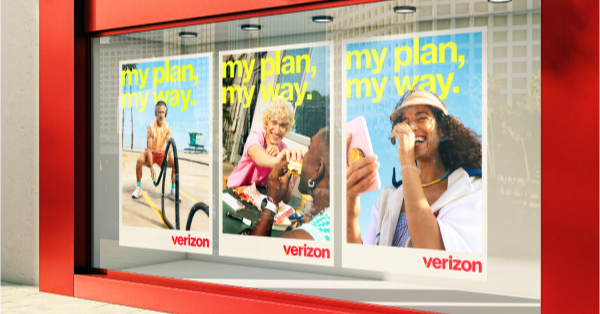Web Real-Time Communication (WebRTC) has come a long way. Developed by Google for browser-to-browser-based communication, connected devices (especially those with cameras) are more frequently leveraging the protocol.
This is because the protocol is browser- and system-agnostic, meaning that it works just as well across Chrome and Firefox as it does Windows and Mac. Additionally, it’s versatile. For example, even though the protocol was mainly designed for browser-to-browser communication, it can be used for browser-to-device communication. WebRTC also doesn’t require any specialized plugins or external software to transmit voice, video, and data from end to end.
As a result, WebRTC achieves low latency and high security at an important moment in the evolution of the Internet of Things (IoT). There are more connected devices in the home and office than ever before and – in the face of increased hacker activity worldwide – it’s integral to provide these endpoints with safe and fast connectivity.
From smart home devices with instantaneous response times to healthcare devices immediately communicating patient data with doctors, WebRTC is more often the connection bridge that allows this data to flow. Perhaps it’s no wonder the WebRTC market is predicted to grow more than $60 billion over the next four years.
Let’s explore why this connection protocol is likely coming to a connected device near you.
The Video Evolution In IoT
As I’ve previously written here and here, there’s an undeniable shift taking place in IoT. The recycling of old mobile phones is bringing cheap image sensors to market and video to connected devices. Doorbells, bird feeders, vacuum cleaners – all of these devices and more are now loaded with cameras and connectivity. The problem, however, is transmitting these feeds between the client and the device.
Enter WebRTC. This protocol grew exponentially during the pandemic thanks to video conferencing. Fast forward to today and it’s increasingly leveraged by device developers and vendors in the context of IoT. Developers like its universality with the open-source protocol working just as well across different systems and platforms. Vendors, meanwhile, like that it can bypass intermediaries and directly deliver information. Additionally, to the point about video feeds and cameras, WebRTC can be customized for mobile applications, a great way to connect customers to their cameras via a smartphone. It’s a win-win-win.
Importantly, WebRTC is a peer-to-peer (P2P) protocol, meaning that you can use it to communicate directly between two devices without an intermediary like a cloud server. The direct transmission of video from a camera to a browser creates a more challenging environment for server issues such as breakdowns or bottlenecks to disrupt the stream. And because the stream doesn’t have to take any detours, it arrives faster and avoids cloud middlemen from charging you to process the (likely large) video files.
Why The Market Embraces WebRTC
WebRTC in IoT is changing quickly. Not only is the market embracing video but devices are evermore entering everyday life. Whether for work or play, a connected device is probably involved. However, with great growth comes great responsibility, and there are three challenges that the market is fighting to solve. Importantly, WebRTC offers an answer to each.
The first is latency. Message transmission isn’t always immediate in IoT. Latency, or the delay in communication, can therefore pose significant risks, particularly in environments where safety or security is paramount. The real-time capabilities of WebRTC play a crucial role in minimizing latency when sending or receiving messages or instructions to and from IoT devices, thereby enhancing their responsiveness and reliability.
The second is security.
Attacks on devices surged by more than 35% in the first half of last year.
Unlike other protocols, WebRTC includes built-in security features like Secure Real-time Transport Protocol (SRTP), preventing eavesdropping and data tampering, and enhancing IoT security.
The third and final challenge is cost. If you are a vendor producing a fair amount of cameras, the server capacity required to relay centralized video streams is massive. Creating direct connections with WebRTC, on the other hand, lets the vendor “reuse” the consumer’s internet infrastructure free of charge. And, since the consumer normally pays for that flat rate, it doesn’t matter to them either.
Device evolution warrants protocol innovation
In addition to the clear benefits listed above, it’s worth noting that this protocol especially shines in contrast to competitors. For example, some providers and developers prefer Real-Time Streaming Protocol (RTSP) as their go-to video streaming protocol. However, the comparison between RTSP and WebRTC is night and day.
The former is a network control protocol requiring some extra setup to make video streaming possible. Developers must use TCP tunneling to get through firewalls and set up a server and an application to function properly. On the other hand, WebRTC enables low latency, real-time communication, and direct streams. It’s an easy choice for video streams in this new wave of IoT.
In this rapidly evolving landscape, WebRTC emerges as a pivotal force reshaping connectivity in IoT. Its universality across browsers and systems, coupled with inherent security features like SRTP, addresses critical challenges in latency, security, and cost. As devices with cameras become increasingly ubiquitous, WebRTC’s peer-to-peer architecture and streamlined communication ensure efficient data transmission, heralding a new era of seamless connectivity and innovation.
With the market projected to soar, prepare for this protocol to become the backbone of connected devices everywhere.








































